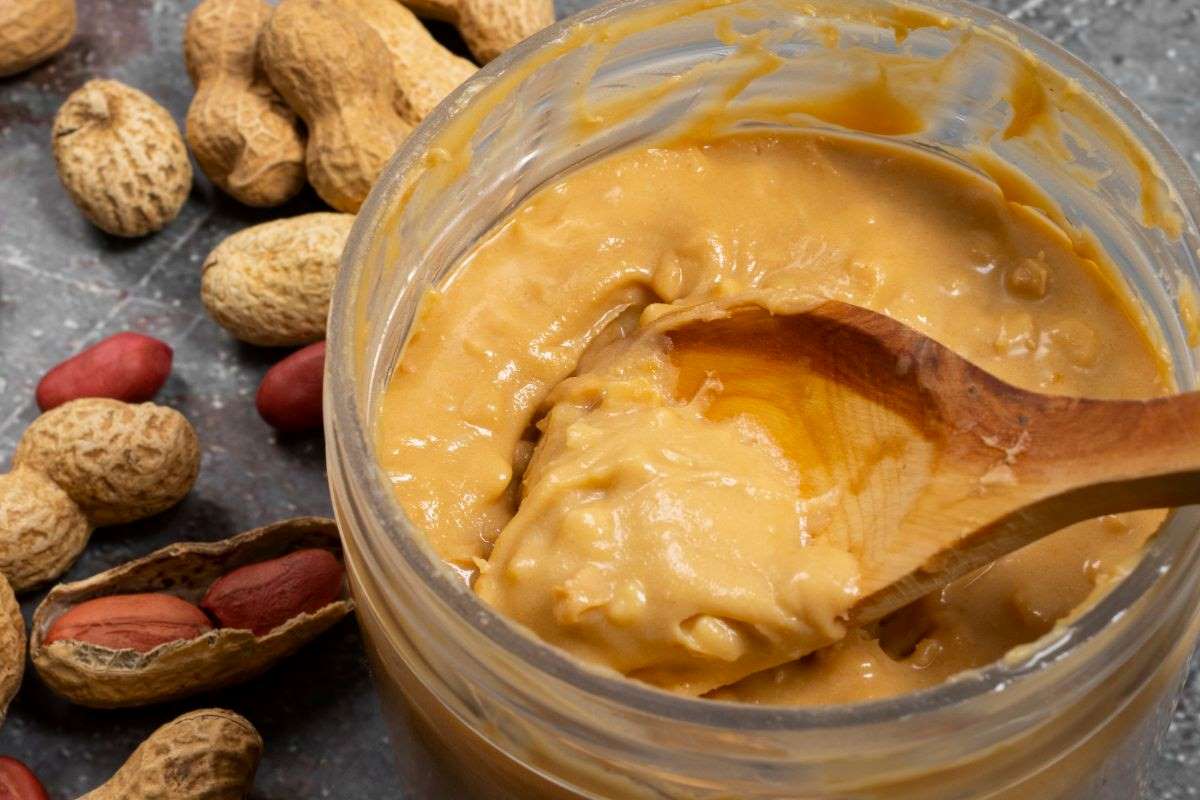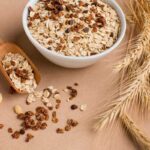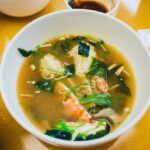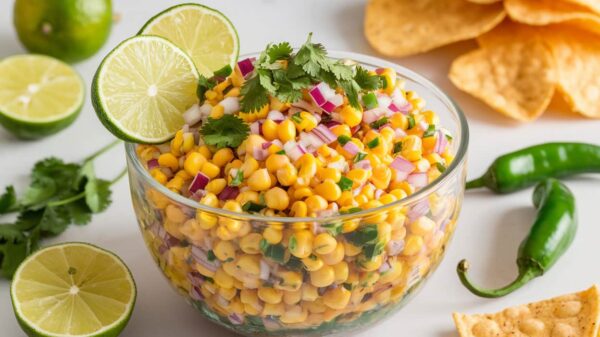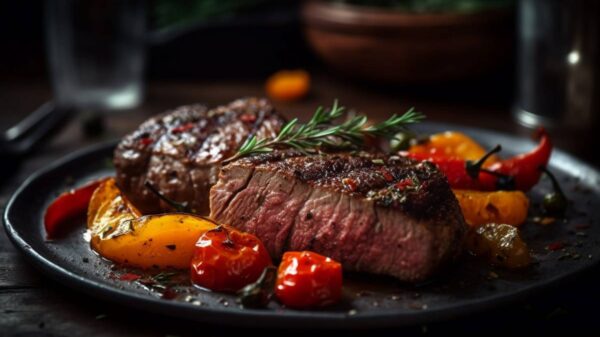Peanut butter is a popular spread enjoyed by many, but with the rising awareness about gluten sensitivity and celiac disease, it’s important to scrutinize such everyday foods. Many people now examine their food choices more carefully to avoid accidental gluten exposure. Understanding whether peanut butter is safe for you is crucial if you are managing a gluten-free diet. The question “Is peanut butter gluten free” becomes significant in this context. This article delves into the gluten-free status of peanut butter, potential risks of cross-contamination, and tips for selecting the right product to ensure it meets your dietary needs.
What is Peanut Butter?
Peanut butter is a creamy or chunky spread made from roasted peanuts. It is created by grinding peanuts into a paste, which can then be mixed with salt and sometimes other additives. The production process may vary depending on whether the peanut butter is smooth or chunky, but the primary ingredient remains peanuts.
Types of Peanut Butter
- Creamy Peanut Butter: Smooth and consistent texture, made by grinding peanuts until they are almost paste-like.
- Chunky Peanut Butter: Contains pieces of peanuts for a textured, crunchy experience.
- Natural Peanut Butter: Made from peanuts and possibly salt, with no added sugars or hydrogenated oils. It often requires stirring to mix the oil that separates.
Is Peanut Butter Gluten Free?
Yes, peanut butter is naturally gluten free if it contains only peanuts and possibly salt. However, cross-contamination can occur if processed in facilities that handle gluten-containing products. To ensure safety, look for peanut butter with gluten free certification and check the label for additional ingredients. Reputable brands that specifically market their products as gluten free can offer additional assurance. Always read labels carefully & choose products from trusted sources to avoid accidental gluten exposure.
Nutritional Facts of Peanut Butter
Basic Nutritional Profile
Peanut butter is a tasty spread and a source of several essential nutrients. Here’s a general overview of its nutritional content per 2-tablespoon serving:
| Nutrient | Per 2-Tablespoon Serving |
|---|---|
| Calories | Approximately 190-210 calories |
| Protein | About 7-8 grams |
| Fat | 16-18 grams, including healthy unsaturated fats |
| Carbohydrates | 6-8 grams |
| Fiber | 2-3 grams |
| Sugar | 1-3 grams (varies by brand and whether it is sweetened) |
| Vitamins and Minerals | Good source of niacin, magnesium, vitamin E, and phosphorus |
Health Benefits
Peanut butter offers several health benefits due to its nutritional content:
- Protein Source: Provides essential protein for muscle repair and growth. It supports lean muscle development and aids in post-exercise recovery.
- Healthy Fats: Contains monounsaturated & polyunsaturated fats that promote heart health. These fats help lower bad cholesterol and support brain function.
- Fiber: Rich in dietary fiber, it aids digestion and maintains healthy blood sugar levels. Fiber promotes regular bowel movements and supports weight management.
Cross-Contamination Risks
What is Cross-Contamination?
Cross-contamination occurs when gluten-containing foods come into contact with gluten-free foods, potentially transferring gluten residues. For those who have extreme gluten sensitivity or celiac disease, even traces of gluten might cause symptoms.
How Can Peanut Butter Get Contaminated?
Peanut butter can become contaminated with gluten if processed in facilities that also manage gluten-containing products, leading to potential cross-contamination. Even if the peanut butter is gluten-free, traces of gluten from other products can transfer. Cross-contamination is also risky if shared equipment is used for gluten-containing and gluten-free products without proper cleaning. Gluten residues can contaminate peanut butter if the same machinery or surfaces are used for packaging and handling.
Choosing Safe Peanut Butter
How to Select Gluten-Free Peanut Butter
When choosing peanut butter to ensure it is gluten-free, several important factors must be considered. First, always review the ingredient list on the label. Pure peanut butter should contain only peanuts and possibly salt. If additional ingredients or preservatives are listed, make sure they do not contain gluten. Second, look for gluten-free certification on the packaging.
Many brands provide this certification, which indicates that the product has been tested and meets gluten-free standards. Certification symbols like the crossed-grain icon or “Certified Gluten-Free” label can offer extra assurance. Finally, opt for reputable brands known for their commitment to producing gluten-free products. Brands like Beyond Celiac and Schar are known for their reliable gluten-free options, making them safe choices for those avoiding gluten.
Popular Gluten-Free Peanut Butter Brands
Here are some brands that are often recommended for their gluten-free products:
- Jif: Known for its classic peanut butter, Jif offers certified gluten-free products.
- Skippy: Skippy’s natural peanut butter is labeled gluten-free, providing an extra layer of assurance.
- Justin’s: This brand offers a variety of gluten-free peanut butter, and their packaging clearly states this information.
- Smucker’s Natural: Smucker’s offers natural peanut butter options that are certified gluten-free.
- Adam’s: Known for its simple ingredients and gluten-free certification.
Not Gluten-Free Peanut Butter Brands
Some peanut butter brands may not be suitable for a gluten-free diet due to potential cross-contamination or gluten-containing additives. Here are examples of brands that might require caution:
- Planters: While peanut butter is a popular choice, it may be processed in facilities that handle gluten-containing products, posing a risk of cross-contamination.
- Peter Pan: Some varieties of Peter Pan peanut butter may not be certified gluten-free and could be processed in facilities with gluten-containing products.
- Kirkland Signature (Costco): While some Kirkland Signature products are gluten-free, specific peanut butter varieties might not have gluten-free certification or could be at risk of cross-contamination.
- Great Value: Walmart’s Great Value peanut butter may not have gluten-free certification and could be processed with potential cross-contamination risks.
Reading Labels: What to Look For
Gluten-Free Certifications
Understanding gluten-free certifications is essential for selecting safe products. Look for labels that clearly state “Gluten-Free” or feature certification logos. These symbols indicate that the product has been rigorously tested and meets gluten-free standards.
Ingredient Lists
Always review the ingredient list for potential sources of gluten. Ingredients such as malt or malt extract can indicate the presence of gluten. Ensure the peanut butter contains only peanuts and salt or other non-gluten-containing additives.
Allergen Statements
Check allergen statements for any warnings about cross-contamination. Some brands may note that their products are processed in facilities that handle gluten-containing items, which can help you assess the risk.
Tips for Avoiding Gluten
- Read Labels Carefully: Always check ingredient lists on packaged foods for any mention of gluten-containing ingredients such as wheat, barley, rye, and their derivatives. Look for gluten-free certifications to ensure the product is safe.
- Choose Naturally Gluten-Free Foods: Focus on naturally gluten-free whole foods, such as fruits, vegetables, trim meats, fish, eggs, legumes, and gluten-free grains like rice and quinoa.
- Avoid Cross-Contamination: Use separate utensils, cutting boards, and cooking surfaces for gluten-free and gluten-containing foods. Ensure thorough cleaning of surfaces and equipment to prevent accidental gluten transfer.
- Communicate When Dining Out: Inform restaurant staff about your gluten-free needs. Ask detailed questions about how your food is prepared and whether there is a risk of cross-contamination.
- Plan and Prepare Meals: Plan your meals and snacks ahead of time to avoid the temptation of gluten-containing options. Prepare and pack your food for travel or busy days to ensure you always have safe options available.
Managing a Gluten-Free Diet
Adopting strict food safety practices is essential to minimize the risk of cross-contamination & ensure a safe gluten-free diet. One crucial step is to use separate utensils for gluten-free and gluten-containing foods. This prevents the transfer of gluten particles between foods, which can occur if the same utensils are used. Additionally, all surfaces and equipment used for preparing gluten-free foods must be thoroughly cleaned.
This includes countertops, cutting boards, and cooking appliances, as gluten residues can linger on these surfaces and potentially contaminate gluten-free foods. Proper storage is also vital. Gluten-free products should be kept in clean, separate containers to avoid any accidental mixing with gluten-containing foods. Following these practices can effectively manage your gluten-free diet and reduce the risk of accidental gluten exposure.
Additional Gluten Free Spreads
If you’re looking for alternatives to peanut butter, consider other gluten-free spreads such as almond butter, cashew butter, or sunflower seed butter. These options can provide variety while adhering to your dietary needs.
Conclusion
The answer to the question, “Is peanut butter gluten free?” is generally yes plain peanut butter made from just peanuts and possibly salt is naturally gluten-free. However, the risk of cross-contamination in processing facilities and during packaging can pose challenges. You can confidently enjoy peanut butter by carefully selecting certified gluten-free products, reading labels, and practicing safe food handling. Always choose products from reputable brands and remain vigilant about potential sources of gluten contamination.
Frequently Asked Questions (FAQ)
Brands like Jif, Skippy, Justin’s, Smucker’s Natural, and Adam’s offer gluten-free peanut butter options. Always check labels for certification.
Yes, a celiac person can eat peanut butter if it’s labeled gluten-free and free from cross-contamination. Always check the label for safety.
Peanut butter is not gluten-free if it’s processed in facilities with gluten-containing products or if it includes gluten-based additives.
Check the label for a “gluten-free” certification and review the ingredient list for any gluten-containing additives.
Most plain peanut butter made from just peanuts and possibly salt is naturally gluten-free. However, cross-contamination can occur if it is processed in facilities that also handle gluten-containing products. Always check labels and look for gluten-free certification to ensure the product is safe.

